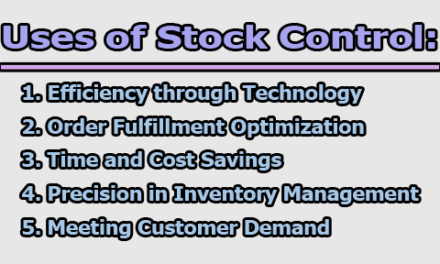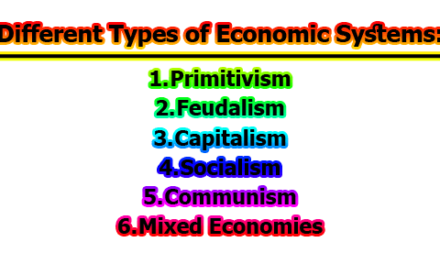An Overview of Corporate Communication:
Effective corporate communication is the lifeblood of successful organizations, serving as a dynamic force that connects diverse stakeholders, shapes perceptions, and drives the achievement of strategic objectives. In today’s fast-paced and interconnected business landscape, the corporate communication department plays a pivotal role in crafting and disseminating messages that resonate with internal and external audiences. From aligning employees with organizational goals to managing media relations, corporate communication encompasses a wide array of functions critical to the overall success and sustainability of a company. In this article, we will explore an overview of corporate communication; understanding of the functions and importance of corporate communication, coupled with strategic tips for efficiency, becomes instrumental in navigating the complexities of modern business communication.
What is Corporate Communication?
Corporate communication refers to the strategic management and dissemination of information within an organization and between the organization and its external stakeholders. It encompasses a range of activities, including internal communication among employees, external communication with customers, investors, and the media, and the development of consistent messaging to establish and maintain a positive corporate identity and reputation.
Importance of Corporate Communication:
The following are some of the pointers that prove the importance of corporate communication:
1. Alignment with Organizational Goals: Corporate communication serves as a vital tool for aligning the entire workforce with the overarching goals and objectives of the organization. When employees have a clear understanding of the company’s mission and vision, they are better equipped to comprehend their individual roles within the broader context. This alignment enhances the collective effort toward achieving strategic milestones, fostering a unified sense of purpose and direction.
2. Employee Engagement: Transparent and open communication practices contribute significantly to employee engagement. When employees feel well-informed about the company’s activities, strategies, and future plans, they are more likely to feel connected to their work. Engaged employees tend to be more motivated, committed, and satisfied in their roles, leading to improved overall morale and a positive workplace culture.
3. Team Collaboration: Effective corporate communication establishes robust channels for team collaboration. By promoting clear and open lines of communication, team members can easily share information, ideas, and feedback. This facilitates a collaborative environment where individuals can work together seamlessly, leveraging each other’s strengths and skills to achieve common goals. Team collaboration, supported by effective communication, is essential for innovation and achieving optimal outcomes.
4. Customer Trust and Loyalty: Trust is a cornerstone of successful business relationships, and corporate communication plays a pivotal role in building and maintaining trust with customers. Clear and consistent messaging, transparent product information, and responsive customer service contribute to positive customer experiences. When customers trust a company to deliver on its promises and communicate openly, they are more likely to remain loyal, make repeat purchases, and advocate for the brand.
5. Crisis Management: In times of crisis, effective communication is critical for managing the situation and minimizing potential damage to the company’s reputation. A well-prepared crisis communication plan ensures that accurate information is disseminated promptly to internal and external stakeholders. Transparent communication during crises helps maintain trust, addresses concerns, and positions the company as proactive and responsible, mitigating long-term negative effects on the brand.
6. Reduced Miscommunication: Clear and effective communication within an organization minimizes the risk of misunderstandings, conflicts, and errors. When information flows seamlessly through well-established channels, employees are less likely to misinterpret messages, leading to a more efficient and harmonious work environment. Internally, reduced miscommunication enhances teamwork and collaboration, while externally, it helps in avoiding misunderstandings with customers, partners, and other stakeholders.
7. Brand Protection: Strategic corporate communication is instrumental in protecting and shaping the company’s brand image. By proactively managing the narrative and addressing issues transparently, organizations can mitigate the impact of negative events on their reputation. A positive brand image, built and maintained through effective communication, enhances the company’s resilience against potential challenges and contributes to long-term brand equity.
8. Employee Productivity: Timely and relevant communication directly influences employee productivity. When information is communicated clearly, employees can make informed decisions and execute their responsibilities more efficiently. This not only reduces the likelihood of errors but also streamlines workflow, contributing to higher productivity levels across the organization. Well-informed employees are empowered to perform their duties with confidence and effectiveness.
9. Innovation and Idea Sharing: Open communication channels foster a culture of innovation within an organization. When employees feel comfortable sharing their ideas, insights, and feedback, it creates a fertile ground for creativity. Effective corporate communication encourages the free flow of information, breaking down silos and allowing diverse perspectives to contribute to problem-solving and the generation of innovative solutions.
10. Adaptability to Change: Change is inevitable in any organization, and effective communication is crucial in facilitating smooth transitions. When employees are informed about changes in strategy, structure, or processes, they are better prepared to adapt. Transparent communication about the reasons behind changes helps reduce resistance, alleviate uncertainties, and ensures that the workforce remains focused and committed during periods of transition. Clear communication about change builds trust and fosters a more adaptable and resilient organizational culture.
Types of Corporate Communication:
Different types of corporate communication take place within and outside an organization. Let’s take a quick look at its varieties:
1. Internal Communication: Internal communication involves the exchange of information within an organization, facilitating smooth interactions among employees at all levels. It includes the transmission of corporate policies, updates on organizational changes, sharing of company goals, and fostering a sense of belonging among team members. Internal communication channels can vary, encompassing emails, newsletters, intranet platforms, team meetings, and collaborative tools. Effective internal communication enhances employee engagement, aligns everyone with the company’s vision, and contributes to a positive organizational culture.
2. Customer Communication: Customer communication focuses on interactions between the company and its external customers. This type of communication is crucial for building and maintaining strong relationships with clients. It includes marketing communications, product information dissemination, customer support, and feedback collection. Through various channels such as advertising, social media, customer service hotlines, and email campaigns, businesses aim to convey their brand message, address customer inquiries, and enhance overall customer satisfaction. Positive and consistent customer communication is vital for brand loyalty and reputation management.
3. Media Communication: Media communication involves the interaction between a company and the media outlets. This type of communication is essential for managing a company’s public image and disseminating information to the wider public. It includes press releases, media interviews, and responses to media inquiries. Companies utilize media communication to announce new products, share financial results, respond to controversies, and maintain transparency. Building strong relationships with journalists and influencers can help shape the narrative surrounding a company and ensure accurate and favorable media coverage.
4. Crisis Communication: Crisis communication is a specialized form of communication that focuses on managing and mitigating reputational damage during challenging times. It involves developing strategies to address unexpected events, such as natural disasters, product recalls, or legal issues, which may negatively impact a company’s image. Prompt and transparent communication is crucial in crisis situations to keep stakeholders informed and maintain trust. Crisis communication plans typically include designated spokespersons, predefined communication channels, and protocols for handling inquiries. Successful crisis communication can help a company navigate turbulent times and emerge with its reputation intact.
Advantages of Corporate Communication:
It has been observed that there are many advantages of effective corporate communication. Let’s take a deep dive into these:
1. Building a Reputation: Effective corporate communication plays a key role in shaping and building a positive reputation for a company. Consistent and transparent communication with both internal and external stakeholders helps create a favorable image. A strong reputation not only attracts customers but also enhances the company’s credibility, making it a trusted player in the industry. A positive reputation can contribute to customer loyalty, attract top talent, and foster positive relationships with partners and investors.
2. Building Corporate Identity: Corporate communication is instrumental in establishing and reinforcing the corporate identity of a company. Through branding, messaging, and visual elements, organizations can create a distinct identity that sets them apart from competitors. A well-defined corporate identity communicates the values, personality, and mission of the company, helping to create a cohesive and recognizable brand image.
3. Building Influence: Corporate communication allows companies to build influence within their industry and beyond. Through thought leadership, participation in industry events, and strategic communication with key stakeholders, a company can position itself as an authoritative and influential player. This influence can lead to increased market share, partnerships, and opportunities for collaboration, solidifying the company’s standing in the business ecosystem.
4. Managing Public Perception: Corporate communication enables organizations to actively manage how they are perceived by the public. By controlling the narrative through press releases, media interactions, and social media, companies can shape public opinion, address concerns, and highlight positive aspects of their operations. Proactive management of public perception helps mitigate potential crises and ensures that the company’s image remains aligned with its strategic goals.
5. Crisis Preparedness and Management: One of the significant advantages of corporate communication is its role in crisis preparedness and management. Companies that have well-established communication plans are better equipped to handle unexpected challenges. Transparent and timely communication during a crisis helps mitigate damage, maintain trust with stakeholders, and position the company as proactive and responsible in addressing issues.
6. Enhancing Employee Morale and Engagement: Corporate communication positively impacts internal stakeholders, especially employees, by fostering a sense of belonging and engagement. Regular communication about company achievements, goals, and changes ensures that employees feel informed and valued. This, in turn, contributes to higher morale, increased job satisfaction, and a more motivated and productive workforce.
7. Facilitating Stakeholder Relationships: Effective corporate communication is crucial for building and maintaining strong relationships with various stakeholders, including customers, investors, suppliers, and regulatory bodies. Clear communication fosters trust and understanding, leading to more fruitful collaborations. Building positive relationships with stakeholders enhances the company’s overall stability and resilience in the business environment.
8. Supporting Marketing Efforts: Corporate communication supports marketing activities by ensuring a consistent and cohesive message across all communication channels. This alignment enhances the impact of marketing campaigns, helping to reinforce the brand message and values. Integrated communication strategies strengthen marketing efforts, creating a unified and compelling narrative that resonates with the target audience.
Functions of the Corporate Communication Department:
The corporate communications group tends to play an important role in how workers, investors, and the general public see an organization as a whole. Let’s take a look at the roles that the corporate communication department handles on a day-to-day basis:
1. Media Relations and Communications: The corporate communication department is responsible for managing the company’s relationship with the media. This involves drafting and distributing press releases, organizing media events, and cultivating positive relationships with journalists. Effective media relations ensure that the company’s messages are accurately conveyed to the public through various media channels, contributing to a positive public image.
2. Monitoring Broadcasts: The corporate communication department closely monitors media broadcasts to stay informed about the company’s mentions in the press. This includes tracking news articles, social media mentions, and broadcast coverage. Monitoring broadcasts is essential for assessing the public sentiment, identifying potential issues, and responding promptly to emerging narratives.
3. Consumer and Public Relations: Managing consumer and public relations is a crucial function of the corporate communication department. This involves engaging with customers, addressing inquiries and concerns, and maintaining a positive relationship with the public. Through various communication channels, including social media, customer service hotlines, and public events, the department works to build trust and enhance the company’s reputation among consumers.
4. Acting as an Advisor in Crisis Communication: The corporate communication department plays a pivotal role as an advisor during times of crisis. It develops and implements crisis communication plans, providing guidance on how to address the media, communicate with stakeholders, and manage public perception during challenging situations. The department’s expertise is crucial in navigating crises and minimizing reputational damage.
5. Internal Employee Communications: Ensuring effective communication within the organization is a key function of the corporate communication department. This involves disseminating internal announcements, updates on company policies, and information about organizational changes. By facilitating transparent communication, the department helps employees understand the company’s goals and fosters a sense of engagement and alignment.
6. Corporate Social Responsibility (CSR) Communications: The corporate communication department is often involved in communicating the company’s corporate social responsibility initiatives. This includes sharing information about philanthropic activities, sustainability efforts, and community engagement. CSR communications contribute to building a positive public perception and demonstrating the company’s commitment to social and environmental responsibility.
7. Government and Regulatory Affairs: Engaging with government bodies and managing regulatory affairs is another function of the corporate communication department. This involves communicating with regulatory agencies, monitoring legislative developments, and ensuring compliance with relevant laws. Effective communication in this realm helps the company navigate regulatory challenges and maintain a positive relationship with governmental entities.
8. Executive Communication: The corporate communication department assists company executives in crafting and delivering key messages. This includes preparing speeches, presentations, and talking points for executives participating in public events, conferences, or media interviews. Consistent and effective executive communication is essential for reinforcing the company’s overall communication strategy.
9. Internal Training and Development Programs: The department may also be involved in developing internal training programs related to communication skills. This ensures that employees across the organization are equipped with the necessary communication tools and techniques, aligning their interactions with the company’s overall communication strategy.
10. Brand Management: Managing and safeguarding the company’s brand image is a central function of the corporate communication department. This involves defining and maintaining brand guidelines, overseeing the use of the brand in various communication materials, and ensuring a consistent and positive brand identity across all channels.
Tips for Efficient Corporate Communication:
Efficient corporate communication is vital for fostering a positive organizational culture, building strong relationships with stakeholders, and achieving overall business success. Here are tips to enhance corporate communication efficiency:
1. Define Clear Communication Objectives: Clearly outline the objectives of your corporate communication strategy. Whether it’s to inform employees about organizational changes, engage customers, or manage a crisis, having well-defined goals helps in crafting targeted and effective messages.
2. Understand Your Audience: Tailor your communication to the specific needs and preferences of your audience. Whether communicating with employees, customers, investors, or the media, understanding their expectations and communication styles ensures that your messages resonate effectively.
3. Use Multiple Communication Channels: Utilize a variety of communication channels to reach diverse audiences. This may include email, intranet, social media, newsletters, video conferencing, and face-to-face meetings. Different channels are suitable for different types of messages and audiences.
4. Ensure Consistency in Messaging: Maintain consistency in your messaging across all communication channels. Consistent messages help in building a strong brand identity, minimizing confusion, and reinforcing key organizational values and objectives.
5. Encourage Two-Way Communication: Foster an environment that encourages open dialogue and feedback. Two-way communication allows for a better understanding of concerns, ideas, and perspectives from both internal and external stakeholders. This can be achieved through surveys, suggestion boxes, town hall meetings, and interactive forums.
6. Prioritize Transparency: Transparency builds trust. Share relevant information openly, even if the news is challenging. Be honest about the company’s successes and challenges, and address concerns promptly. Transparent communication helps prevent rumors and misinformation.
7. Provide Timely and Relevant Information: Ensure that information is delivered in a timely manner, especially when it pertains to critical updates or changes within the organization. Timeliness enhances the effectiveness of communication and helps in keeping stakeholders well-informed.
8. Train Employees in Communication Skills: Offer training programs to employees to enhance their communication skills. This includes written and verbal communication, active listening, and effective presentation skills. Improved communication skills contribute to a more cohesive and productive work environment.
9. Utilize Technology Effectively: Leverage technology to streamline communication processes. This may include collaboration tools, project management software, video conferencing platforms, and internal communication apps. Technology can enhance communication efficiency, particularly in large or geographically dispersed organizations.
10. Measure and Evaluate Communication Effectiveness: Establish metrics to measure the success of your communication efforts. Analyze feedback, engagement metrics, and the impact of communication campaigns. Regularly evaluate the effectiveness of your strategies and adjust them based on the results.
11. Crisis Communication Preparedness: Develop a robust crisis communication plan. Ensure that key personnel are trained to handle crises effectively, and establish clear communication protocols. Timely and transparent communication during a crisis is essential for maintaining trust and minimizing reputational damage.
12. Promote a Positive Organizational Culture: Foster a culture that values communication, collaboration, and feedback. A positive organizational culture encourages employees to share ideas, express concerns, and actively participate in communication initiatives, contributing to overall efficiency.
In conclusion, the significance of corporate communication cannot be overstated in the contemporary business environment. As a multifaceted discipline, it not only aligns internal and external messaging but also contributes to building trust, managing reputation, and fostering a positive organizational culture. By defining clear objectives, understanding diverse audiences, and embracing transparency, organizations can optimize their communication strategies. Incorporating two-way communication, leveraging technology, and prioritizing crisis preparedness further enhance the efficiency of corporate communication efforts. As companies strive for success in an ever-evolving marketplace, a strategic and well-executed corporate communication approach becomes a cornerstone for achieving sustained growth, fostering innovation, and maintaining a resilient and positive brand image.

Assistant Teacher at Zinzira Pir Mohammad Pilot School and College










